Showing 133–144 of 151 results
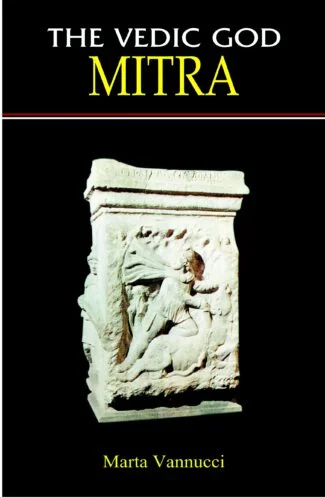
The book talks about the origin, personality and evolution of the Vedic God Mitra, and refers to the Rigveda and emergence of new gods as facets of the original Mitra-Mithra with time. It also delves into religious and cultural aspects of life associated with Him.
The Vedic God Mitra was highly revered and invoked for proper fulfilment of civil and religious acts and duties. Mentioned 175 times in the Rigveda alone, He has been described as one of the most wonderful, glorious and mighty of the Vedic gods.
This work presents a synthetic study of the evolution of the personality of Mitra, a most significant representative of the early stages of the ancient Indo-Aryan and Indo-Iranian cultures. Beginning with a discussion on the name and personality of the Vedic God, Mitra, the work deals with the evolution of the god by referring to the Rigveda and emergence of new gods as facets of the original Mitra-Mithra with time. It examines how the personality of Mitra evolved in tune with ecological and cultural diversification, growing complexity and increase in knowledge of the various groups of people who worshipped Mitra/Mithra. It delves into religious and cultural aspects of life associated with Him. It is a detailed study of the concept and origin of the Indo-Iranian God Mithra and the relationship of the god with others in the Avestan scheme of divinity.
The volume, with explanations of various terms and concepts and supported by illustrations, will be useful to scholars and students of Indology — in particular, ancient religion and culture in India.
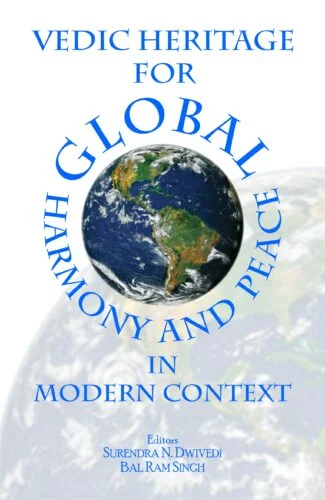
This volume delves into the different aspects of Vedic tradition, having global harmony and peace as the focus. It suggests one how to co-exist in the Upaniùads, how to practise Hindu universalism and the impact of âyurveda and the Bhagavad-Gita on our mental health, and the syncretism in ancient education.
The collection of scholarly articles presented in the volume explores various aspects of Vedic traditions, especially relating to global harmony and peace, in the present-day context. The Proceedings of the Sixth World Association for Vedic Studies (WAVES) Conference emphasise Vedic traditions as not confined to the Indian subcontinent today but as having spread to different parts of the globe. They deal with the essence of Vedanta, the contribution of the epic literature, history relating to the Rigvedic Aryans, Vedic sciences, and socio-economic and political aspects of Vedic life. Offering fresh ideas, they highlight the significance of the Vedic system for ensuring global peace and harmony, and satisfaction in the present. They study the concept of harmony and peace, and emphasise on the co-existence in the Upanishads, the Hindu concept of universalism, the importance of the Ayurveda and the Bhagavad-Gita in maintaining mental health, and on the global unity and syncretism in the education provided in ancient India. Attempts are made to cull out management ideas from the Mahabharata, and throw light on the relevance of the Arthashastra in modern-day geo-politics and the special relevance of Sanatana Dharma in the modern world. In the process, the scholars reveal the fictional aspects that have been linked to the Indian traditions and the related social evils.
The volume will interest a range of scholars of Indology and general readers as it explores the ancient Indian tradition, especially the Vedic tradition, in a comprehensive manner.
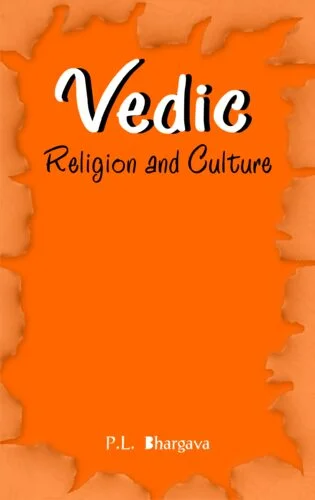
To resolve controversies related to Vedic Religion/Culture, the author comes to grips with the idea of Gods omnipresence in Aryan religious thought, the Rgvedic Hymn of Visvedevas, etc. and explores matters of historical and literary importance.
Despite two centuries of their multifarious, critical studies in India and the Western world, Vedic writings unveil myriad questions that have either baffled scholars or have led to serious controversies. A distinguished Indologist, Professor P.L. Bhargava marshals, for the first time, indisputable evidence to resolve some of these questions like, for instance: Who wrote the Rigvedic hymns? Which deities, in the Rigveda, constitute the group, called Adityas? Or, again in the Rigvedic contexts, what does the word asura mean? Who, of the two major Vedic gods: Indra and Varuna, has greater antiquity? Is Ayodhya: the birth place of Lord Rama, mentioned in the early Vedic literature? Where did Lord Ramas ancestors: the kings of Ikshvaku dynasty originally rule? And how far danastutis (the praises of gifts) of the Rigveda can help scholars to reconstruct the political history of the Vedic Age? Combining in him the erudition of a Sanskritist and a historian, the author also comes to grips with the idea of Gods omnipresence in Aryan religious thought, the enigmatic Hymn of Vishvedevas in the Rigveda, or the confounding words/phrases in its Hymn of Creation; besides several other issues of religious, cultural; historical and literary importance all these on the basis of his unbiased, life-long studies of the Vedic texts. An exquisite presentation of Dr Bhargavas writings, the volume covers a variety of themes that range from the very authorship of the Rigvedic hymns to the status of Vedic religion today. Invaluable to the scholars and specialists of Vedic lore.

This book deals with the various aspects of science and scientific thoughts of the Vedic bards reflected in their hymns. Attemps have been made here to analyse the Vedic verses in scientific terms adhering to various branches of modern science.
This book Vedic Science and Technology contains, in its ten chapters, the significant aspects of science and scientific thoughts of the Vedic bards reflected in their hymns and the modern scientific theories developed later. The Vedic deities symbolize the natural phenomena which the human beings of that period came across in their day-to-day life and had interactions with such events. Ostensibly, the modern scientific theories and practices have their roots in the most ancient tradition and culture. Various branches of knowledge such as Astronomy, Astrology, Cosmology, Cosmogony, Space-time Continuum, Mathematics, Chemistry, Physics, Meteorology, Seismology, Botany, Zoology, Medicine, Agriculture, Geology, Environmental Science and Ecology, and Science and Technology have been discussed here in accordance with speculations of the Vedic bards gleaned from the hymns. Earlier scholars belonging to other disciplines, especially from Linguistics, Mathematics, Physics and Astronomy have tried their best to interpret the Vedas from the point of view of their particular disciplines. But, here, in this study, attempts have been made to analyse the Vedic verses in scientific terms adhering to various branches of modern science. The present discourse, no doubt, forms a strong base for any microscopic investigations of the Vedic thought and notion to be taken up in future by our inspired scholars and scientists.

This book deals with the various aspects of science and scientific thoughts of the Vedic bards reflected in their hymns. Attemps have been made here to analyse the Vedic verses in scientific terms adhering to various branches of modern science.
This book Vedic Science and Technology contains, in its ten chapters, the significant aspects of science and scientific thoughts of the Vedic bards reflected in their hymns and the modern scientific theories developed later. The Vedic deities symbolize the natural phenomena which the human beings of that period came across in their day-to-day life and had interactions with such events. Ostensibly, the modern scientific theories and practices have their roots in the most ancient tradition and culture. Various branches of knowledge such as Astronomy, Astrology, Cosmology, Cosmogony, Space-time Continuum, Mathematics, Chemistry, Physics, Meteorology, Seismology, Botany, Zoology, Medicine, Agriculture, Geology, Environmental Science and Ecology, and Science and Technology have been discussed here in accordance with speculations of the Vedic bards gleaned from the hymns. Earlier scholars belonging to other disciplines, especially from Linguistics, Mathematics, Physics and Astronomy have tried their best to interpret the Vedas from the point of view of their particular disciplines. But, here, in this study, attempts have been made to analyse the Vedic verses in scientific terms adhering to various branches of modern science. The present discourse, no doubt, forms a strong base for any microscopic investigations of the Vedic thought and notion to be taken up in future by our inspired scholars and scientists.
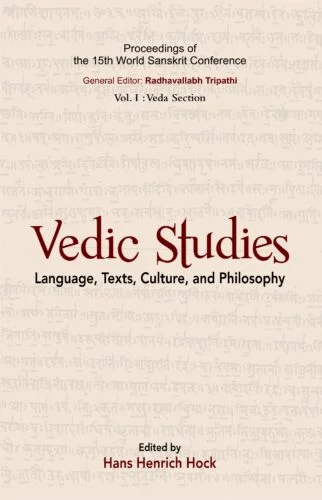
This volume contains scholarly papers from the Veda Sessions of the 15th World Sanskrit Conference, touching a broad spectrum of the Vedic tradition and focusing on three major aspects of that tradition: language and linguistics; textual criticism and text edition; and culture, philosophy, mythology.
The Vedas hold a position of prominence, both as the oldest documents of Sanskrit and as the most venerable texts of Hinduism.
This volume contains scholarly papers from the Veda Sessions of the 15th World Sanskrit Conference, touching a broad spectrum of the Vedic tradition and focusing on three major aspects of that tradition: language and linguistics; textual criticism and text edition; and culture, philosophy, mythology.
Language and linguistics papers range from syntax and semantics (Hock, Küummel) to morphology (Tucker), onomastics (Pinault) and rhetorical structure (Klein). Remarkably, three of the articles in the second part deal with the tradition of Atharvaveda (Bahulkar, Kulkarni, and Rotaru and Sumant); the remaining two focus on Rigveda (Khare and Köhler). Two papers in the last part deal with matters of Vedic philosophy (Benedetti and Vedi), one is devoted to mythology and ritual (Gadgil), and one addresses ritual and material culture (Nishimura).

Dr. Murthy marshals the whole extent of geological data from the Vedic/post-Vedic literatures and even later works like Varahamihiras Brhatsamhita to highlight the Vedic world-view of the earth, particularly the Vedic theory on Earth science.
Vedas are indisputably the oldest of mankinds documents. Which not just magnificently articulate the early civilized mans wonderment about the cosmos and his yearnings for the divine, but also unfold the foundations of many ancient sciences, like mathematics, astronomy, alchemy, metallurgy, botany and medicine. This book, however, is the first ever effort to show how Vedas embody the earliest discourses on the earth and the earth-related phenomena. Combining in him the acumen of a professional earthscientist and a highly proficient Sanskritist, Dr. Murthy marshals the whole extent of geological data from the Vedic/post-Vedic literatures, and even some of the later works, like Varahmihiras Brihatsamhita (of the 5th century ad) in his thematic effort to highlight the Vedic worldview of the earth and, importantly, how it almost approximates the projections of modern earthscience. Developed from over three decades of Dr. Murthys researches in ancient Sanskrit literature, the study employs contemporary scientific idiom to describe Vedic perception of the earth, its origin, shape, dimensions, constitution, movements, quakes/tremors, and its position vis-a-vis the solar system, stars and ethereal space. Also including, contextually, the Vedic idea of heliocentricity, the book puts forth the Veda-based methods for deciphering/predicting deep-focus earthquakes for future research and investigation. Together with a glossary of Sanskrit terms and relevant bibliographic references, this geological perspective on the Vedas will fascinate scholars, specialists and discerning readers alike.
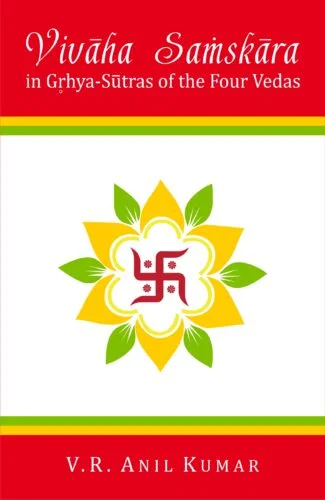
Of a rare kind, this book does comparative analyses after studying seventeen Grhya-Sutras across four Vedas of the number and type of rituals of marriage in each Grhya-Sutra and the order of performance of rituals. It also lists the mantras (with English translation) and their sources and talks about the differences in employing the mantras.
Vivaha (marriage), in Hindu society, is one of the most important samskaras, out of the sixteen sacraments, which a person steps in with full understanding/consciousness. Marriage is a fascinating experience that stays alive in ones mind throughout the life. The mantras and slokas of the Grhya-Sutras of the four Vedas, chanted in this ritual, are in Sanskrit and a vast majority is unaware of their meanings and just follows the instructions of the celebrant priest, purohita.
The author delves deep into the Grhya-Sutras of Vedas and brings forth the details of vivaha samskara principles, philosophy, practices, rituals and so on. Grhya-Sutras Asvalayana, Sankhayana and Kausitaki of Rigveda; Paraskara (Sukhla Yajurveda), Apastamba and Hiranyakesin (Krsna Yajurveda), Baudhayana, Varaha, Manava, Agnivesya, Bharadvaja, Kathaka and Vaikhanasa of Yajurveda; Gobhila, Khadira and Jaimini of Samaveda; and Kausika of Atharvaveda are well explored and seriously analysed, having given the original mantras in Sanskrit with their English translation.
Of a rare kind, this book does comparative analyses of the number and type of rituals in each Grhya-Sutra and the order of performance of rituals.
This scholarly work creates a sudden seriousness and sanctity to vivaha samskara through the detailing of mantras and the rituals. Being in it, one is not far off the Vedic period, giving a new meaning and dimension to our understanding of Hindu vivaha samskara and its sanctity.

This book, presents an in-depth study of the concept of death from the distinct viewpoints of all religions and cultures and at the same time taking into account their common concept of continuity of life after death, in contrary to the biological science that adheres to the mechanism of cell-death.
If life is a reality, the death is an eternal truth. Does immortality mean clinging to body? If so, it cannot be the life artificially alive as in modern hospitals. Is extinction of species important? The recent developments in the field of molecular biology to clone the extinct animals may raise another dimension: do the species ever die? Death is not the extinction of life, it rather opens a horizon for new journey on this planet or the other. If a person elevates himself and immensely contributes to the society, he gets perpetuated and becomes immortal. Every culture has its own eschatology bearing with death, rituals, customs, beliefs and values. While the Hindus and the Buddhists adhere to the theory of reincarnation, the Muslims and the Christians hold the concept of eternal after life. In the present book, originally the proceedings of the seminar organized by the N.K. Bose Memorial Foundation, Varanasi, various distinguished scholars have richly contributed in presenting an in-depth study of the concept of death from the distinct viewpoint of all religions and cultures and at the same time taking into account their common concept of continuity of life after death in contrary to the biological science that adheres to the mechanism of cell-death. Through the social, philosophical, medical, and ayurvedic approaches to death, the existence of soul based on the ideas of immortality and ancestor-worship has been further validated. The book has demonstrated as to how this hard-headed research can illuminate a certain theory that would serve as a bridge between the physical science and social science, the purpose being to reveal the most overall general character of Nature and the nature of Man. This book would definitely appeal to all general readers and more particularly to those of philosophical temperament keen to know more about Death and also the world beyond it.
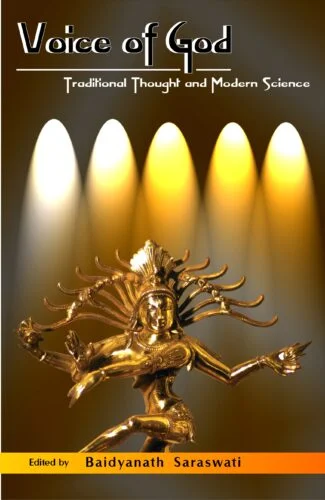
This book presents an understanding of God in various religions and traditions around the world Brahman in the Upanishads, Allah in Islam, God in Tibetan, Zoroastrian, Buddhist and Jaina faiths, the conception of the divine in Christianity and the folk deities of the Adivasi groups.
The result of a seminars proceedings, the volume presents an understanding of God in various religions and traditions around the world. It examines the concept of the Brahman in Hindu religious thought, and God as forming the relationship between the unmanifest Brahman and the manifest Universe. It views the approach of the Semitic religions that make absolute difference between God and Man. It discusses the glory associated with God, the nature of the Supreme God and His lesser denominations as well as the modern notion of God as a human creation and residing in the mind of Man. It delves into the core of the Upanishadic thought, God in Tibetan thought, signs of Allah and his attributes in Islam, God in the Zoroastrian faith, Buddhism and Jainism vis-a-vis the notion of divinity and the Christian conception of the divine. It deals with God in the Shamanic cosmogonies of some Adivasi groups of eastern India and the syncretic folk deities of Sundarbans in West Bengal. The scholars interpret the cosmological, teleological and ontological proofs, in various forms, to understand the reality of God.
The volume, with its painstaking studies, will prove invaluable to scholars and readers, mainly those associated with religious studies.

The book presents views on life from the traditional as well as modern perspectives to come up with many interpretations surveys evolution of life and extinction theories, focusing on development of life over 600 million years from simple to complex. The contributors delve into the Upanisadic and Vedic concepts of life, and the Hindu astrological and ayurvedic perception and Christian perspective of life as well.
The volume presents views on life from the traditional as well as modern perspectives to come up with many interpretations. Indologists, anthropologists, sociologists, philosophers and physical and social scientists profess that traditional thought and modern science offer two different world-views on life: the first encompassing a wholeness of life, and the other explaining the universe and life with ideas of the realm of matter alone. Referring to various ancient texts as well as thoughts of social scientists based on empirical studies, the contributors delve into the Upanishadic and Vedic concepts of life, and the Hindu astrological and ayurvedic perception of life. They examine the Christian perspective of life as well. Discussing the theme from the viewpoint of physical law, the book surveys evolution of life and extinction theories, focusing on development of life over 600 million years from simple to complex. It ponders over questions like radical difference between living and non-living matter though both consist of molecules. Connecting science to societal development, it deals with ancient community theories on life and nature taking specific ethnic communities like the Mesoamericans and the Santals in India as examples. The book is an all-inclusive and extensive study of traditional and scientific perspectives on the life origin, urges and responses, meaning and essence of life, and its development.
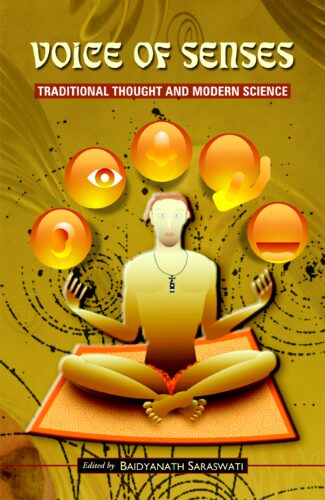
This volume is devoted to a thorough understanding of the concept of senses as interpreted in the ancient Asian traditions with particular reference to Indian religious and philosophical thought. It examines the functions, perception, scientific approach and the recurring cycle of Five Senses in Chinese, Tibetan and Indian philosophy.
This volume is devoted to a thorough understanding of the concept of senses as it has been interpreted in the ancient Asian traditions with particular reference to Indian religious and philosophical thought. It examines the functions of the sense-organs and the perception of them adopting a sociological and scientific approach. The first part of the presentation comments on the recurring cycle of Five Senses in Chinese, Tibetan and Indian philosophy. It takes up ancient knowledge on the senses as can be gained from the Vedas and the Upanishads, the Buddhist Abhidharma text and Jainism, as also from Islamic and Christian philosophies. They relate functioning of the sense-organs to aesthetic perception. Articles in the second part examine ethnic-cultural communities’ responses to senses and attribution of functions to them, as, for instance, the importance attached to the senses by the traditional snake-charmers. They study responses by plant and animal life to their environment and inquire into the biological processes involved in sense perceptions. Modern technology is discussed as imitating the Five Senses. These articles should be of benefit to scholars interested in learning about the different aspects of Indian religious and philosophical perceptions.